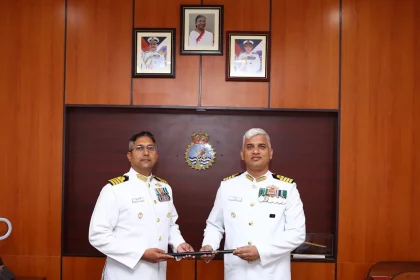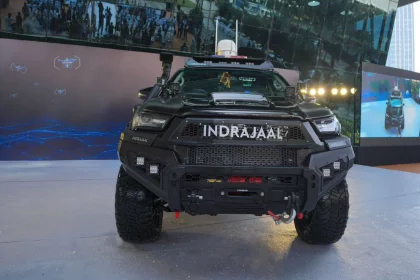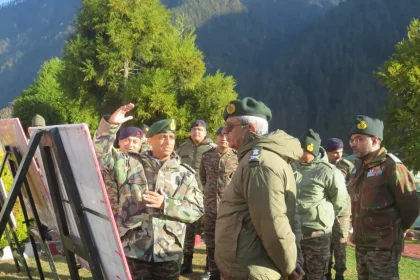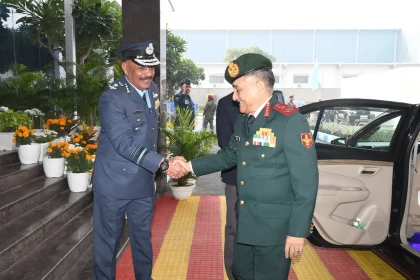Rear Admiral Srinivas Maddula Assumes Charge as ACNS (Foreign Cooperation & Intelligence)
Rear Admiral Maddula to Lead Indian Navy’s Global Outreach and Maritime Intelligence Efforts.
Captain P Dinesh Assumes Command of INS Pallava and Takes Over as Station Commander, Kalpakkam
Smooth Leadership Transition Strengthens Naval Operations at Kalpakkam.
Indian Naval Academy Honours Outstanding Trainees with Sports Proficiency Awards
INA Felicitates Trainees for Exceptional Skill, Discipline and Sporting Excellence.
India Unveils First Fully Mobile, AI-Enabled Anti-Drone Patrol Vehicle ‘Indrajaal Ranger’
India strengthens border security with a first-of-its-kind mobile anti-drone patrol platform.
Lt Gen Raghu Srinivasan Reviews Restoration Work on Lachen Axis in North Sikkim
BRO Chief Assesses Key Infrastructure Restoration After June Cloudburst.
CDS General Anil Chauhan Highlights IAF’s Modernisation and Joint Synergy at Western Air Command Conference
CDS stresses indigenous capability, jointness, and theatre command transition.






